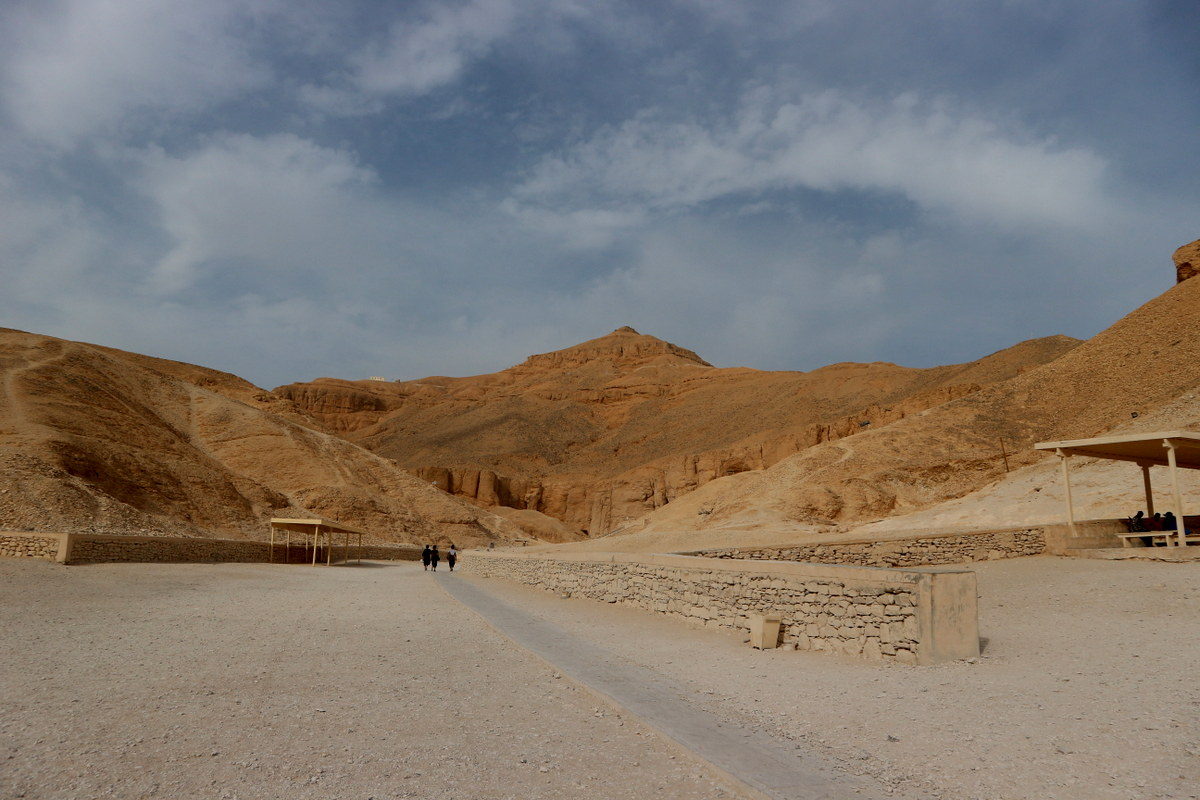
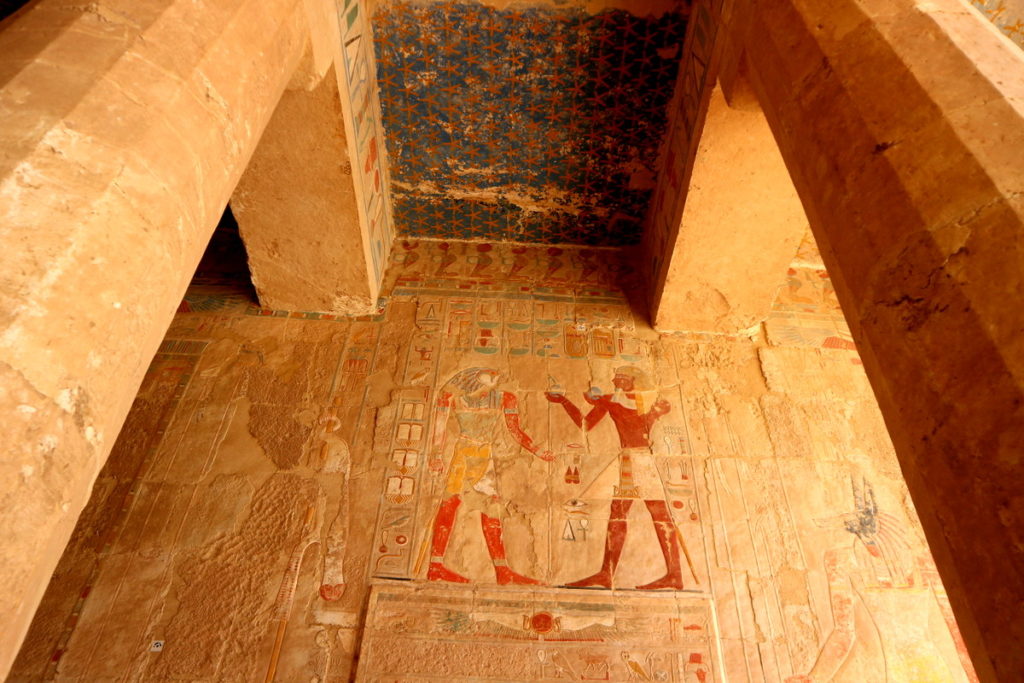 Luxor
Luxor
Luxor is the modern name for the city sitting on top of what used to be the Pharaoh’s capital, Thebes (16th-11th centuries). It’s on the east side of the Nile in the southern part of Egypt and is the gateway to Valley of the Kings. Not to be ignored are two other impressive sites that sit a few miles apart at either end of Luxor city. The Luxor Temple and my favorite, the Karnak Temple-both huge ancient monuments.
The Karnak Temples
Karnak Temple Complex is a vast religious site that has been added to by different Pharaohs for differing gods, some dating back as far as 4000 years. The site over time incorporated different temples, a lake, pylons, statues and obelisk’s (one still standing and one on its side). Also, the hypostyle hall, and a row of sphinx’s that used to run the 3 km’s from the temple complex to the Luxor Temple. This is currently being restored.
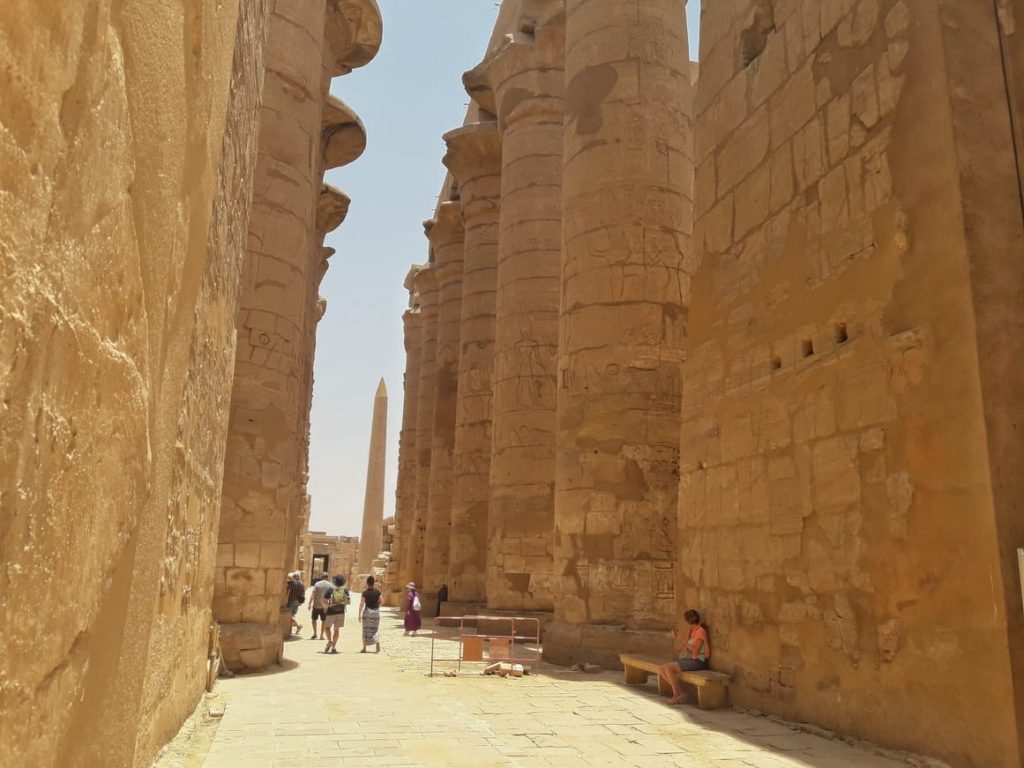
It’s the hypostyle hall (which translates to ‘under pillars’) that made this site the most amazing and memorable for me. It covers 5,000 sqm’s and houses 134 massive pillars, 12 of the main structural ones measuring 24 meters in height. They’re very intact with historical reliefs still clearly visible. It’s worth walking around with your neck as far back as it’ll go to see the vibrant colors still evident. Every which way you turn the pillars are lined up, something like a rubber plantation but much more impressive as a feat of ancient precision engineering. You can point your camera from any angle you like and still get great shots of orderly rows.
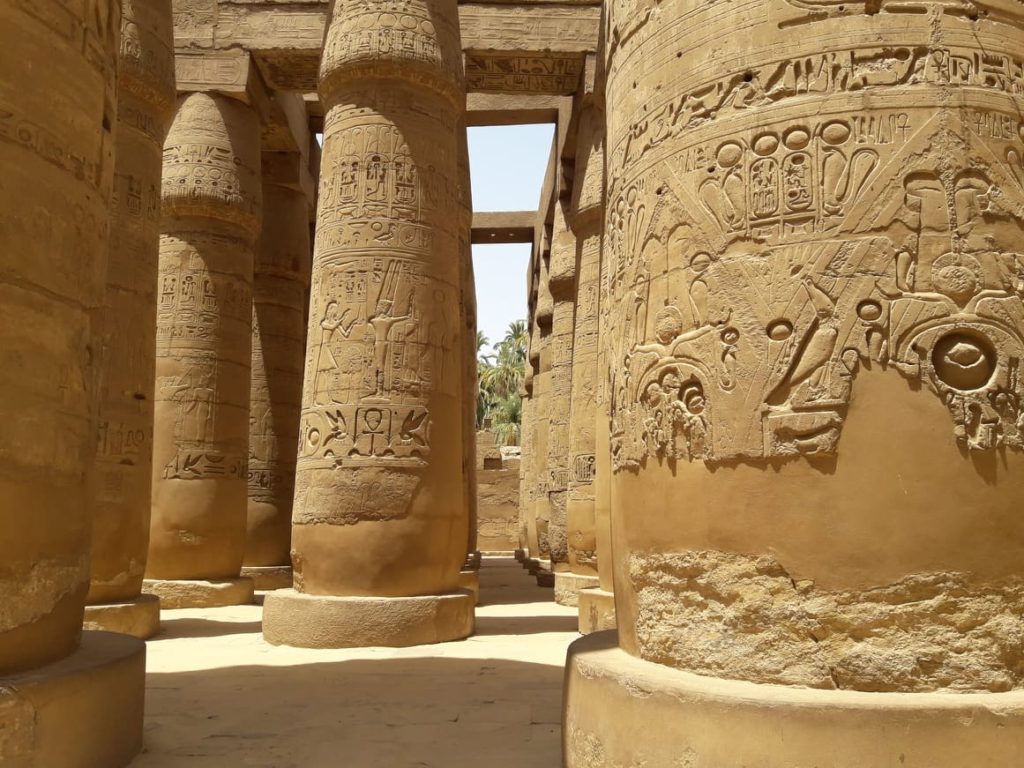
Cost: Entrance Fee, 120 Egyptian Pounds (approx. $7us)
Valley of the Kings
Building a mammoth monument in which to bury your Pharaoh/King and all his worldly possessions (gold, silver, jewels and anything else required in the next life) was wrought with its own issues. In modern times it would be like putting up an advertisement on social media saying ‘thieves wanted, easy job, rich rewards and no experience required’.
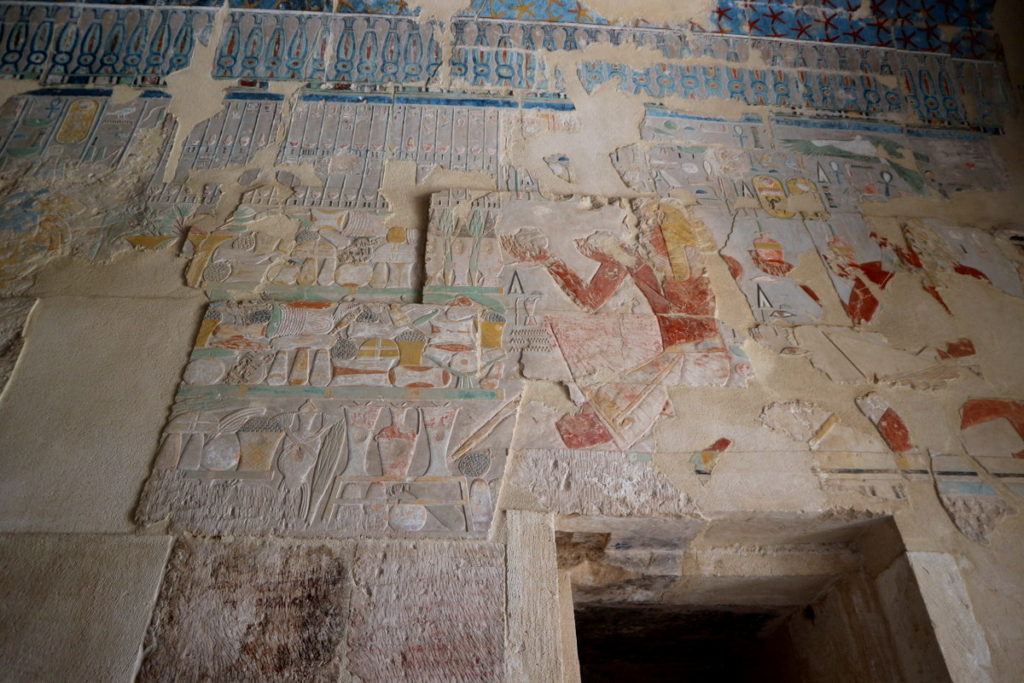
No amount of security was enough to keep grave robbers away from places like The Pyramids, everyone knew what was inside. And so, in an attempt to be a step ahead of the thieves, from the 16th century BC for some 500 years until the 11th century BC, Egyptians started burying their Pharaohs in secret. It was in a valley near Thebes (Luxor) on the west bank of the Nile. The tradition was to lay Kings to rest on the west bank so they would be in the same place that the sun lays itself to rest each night.
There are around 60 tombs with only some open to the public. And those, in the interest of preservation, are not all open at the same time. The amount of tourists and the humidity from all those bodies is detrimental to the decorative carvings that depict the mythology and lives of their owners. The most impressive of the tombs are those whose color is still so vibrant. As always in Egypt, if you tie the age in with the sight you see before you, then you begin to have an understanding of the sheer magnitude of what you are seeing. And with that, hopefully, be suitably impressed.
The last discovery of a tomb in the Valley was in 2005 and the last major discovery was in 1922 with Tutankhamun’s tomb. Perhaps the reason for this short-term (9 years-he took the throne aged 9 and died at 18) Pharaoh’s fame is due to the discovery of his tomb which was almost completely untouched.
Everything that was found in the tomb has been moved to the Egyptian Museum in Cairo so I didn’t deem it worthwhile to see his tomb specifically. It does, however, make a visit to the museum in Cairo worthwhile for this and for every other amazing ancient artifact that it houses. You have to check out the mummies.
Travel Notes:
Cost:160 Egyptian Pounds ($9 us) Which allows you access to three tombs. I paid to visit one other tomb, that of Ramesses VI (80 Egyptian Pounds) the carvings and colors of which was spectacularly preserved. Two women on our tour came away with tears in their eyes after visiting another temple which equated to about $70us if you wanted to pay the extra-I can only imagine how amazing it was.
Al-Deir Al-Bahari Temple
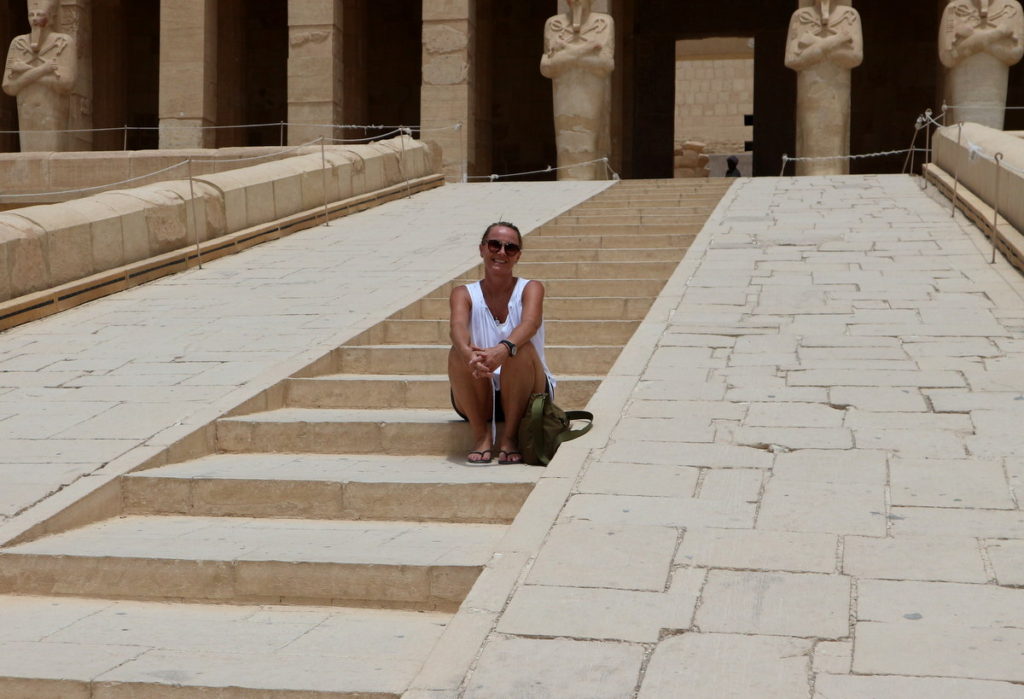
Not far from the Valley of the Kings is the ancient temple built for and by the 18th dynasty Pharaoh, Hatshepsut. She became the third female Pharaoh when she married her brother at age 12. It was 14 centuries later, holding the same level of rule as Hatshepsut, that Cleopatra came along. The temple was also known as Djeser-Djeseru-Holy of Holies.
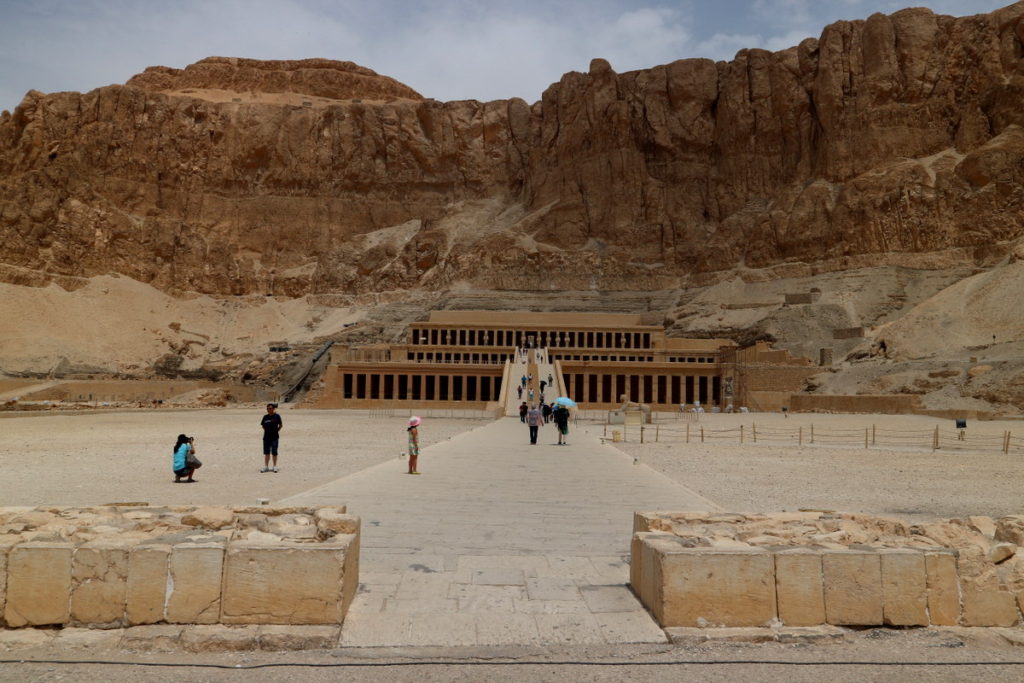
Cost: 80 Egyptian Pounds
Colossi of Memnon
The two massive (20 meters high) statues in the background are all that remains of the monument to Pharaoh Amenhotep III from the 18th century BC.
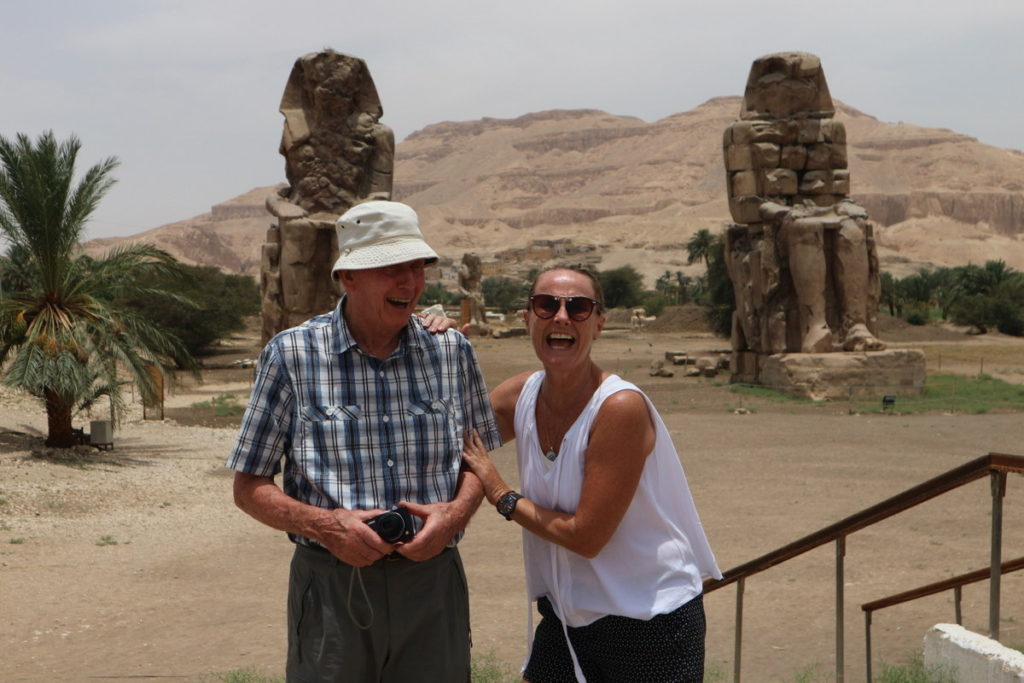


 Hairstyles says
Hairstyles says
November 25, 2019 at 2:06 pmI’m really impressed along with your writing skills as well as with the layout for your blog. Is that this a paid subject or did you customize it your self? Anyway keep up the excellent quality writing, it is uncommon to peer a nice blog like this one today..
 GuQin says
GuQin says
December 2, 2019 at 6:18 amMagnificent website. Plenty of useful information here. I抦 sending it to several buddies ans additionally sharing in delicious. And obviously, thanks on your sweat!
 jacquiarawson@gmail.com says
jacquiarawson@gmail.com says
December 14, 2019 at 10:26 amThanks for your feedback and passing it on.